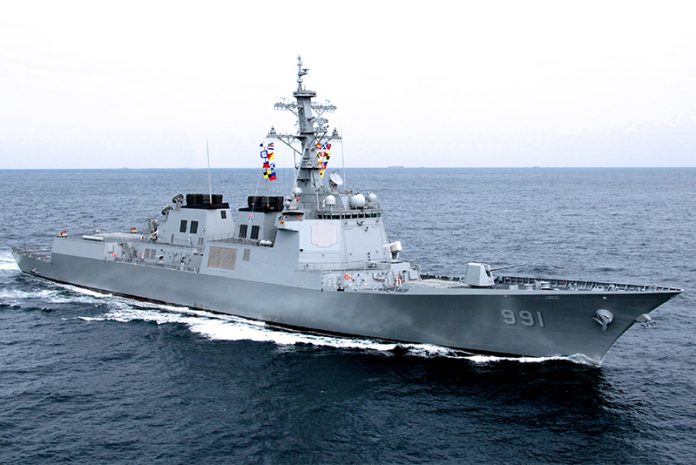South Korea’s Defense Acquisition Program Administration (DAPA) has commenced bidding processes for the basic design a new guided missile destroyer for the Republic of Korea Navy (RoKN) under the government’s Korea Destroyer Next Generation (KDDX) programme, the agency announced on 29 May.
Bidding KDDX programme
DAPA has stipulated that bids be submitted by 20 July with the selected company required to complete design work by the end of 2023. Detailed design and construction will then proceed from 2024.
On 27 April, the country’s Defense Project Promotion Committee approved a related effort to develop and build an indigenous combat system for the KDDX programme. DAPA noted on the same day that around $545 million has been set aside for combat system research and development which is expected to be completed by 2030.
KDDX ships are planned to be equipped with the most advanced platform and weapons systems available from South Korean defence companies and will include high levels of automation and advanced full-electric propulsion systems.
Several companies
Several companies are already positioning themselves for anticipated KDDX work, with Daewoo Shipbuilding and Marine Engineering (DSME) announcing on 11 May that it had completed preliminary research on the development of an electric propulsion system under a partnership with the Korean Electrotechnology Research Institute (KERI), Korean Register of Shipping and Seoul National University.
DSME faces off Hanwha Aerospace, which announced in late February that it is teaming with General Electric’s (GE’s) Power Conversion business to supply electric propulsion systems for the KDDX destroyers.
Meanwhile, LIG Nex1 and Hanwha Systems also announced that they will vie for opportunities to develop and manufacture the KDDX’s combat system, integrated mast, and multifunction radar.
The first vessel
Although DAPA provided no further details about the vessels, local reports indicate that the RoKN plans to deploy around six of these destroyers by the late-2030s. The first vessel is expected to be built by the late 2020s at a cost of around $1.57 billion.
by Jr Ng











